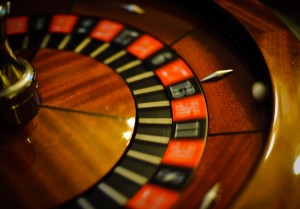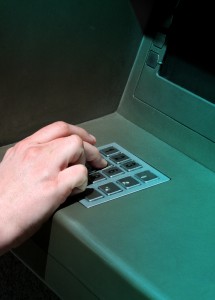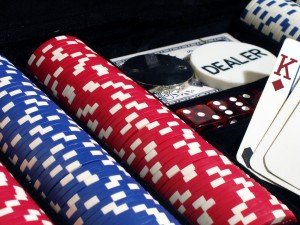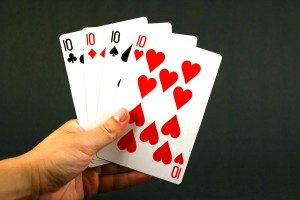Leave it to chance, luck of the draw. Let the chips fall where they may. We have been playing games of chance as long as we have been enjoying the warming glow of fire (that’s a long time kids). Of course where some stand to win, many stand to lose. For some, those odds simply aren’t good enough; they want to take a chance and make it into a sure thing.
In the modern era, casinos are a big business. A big pot of gold attracts a whole host of treasure seekers and some criminals learned the hard way that crime doesn’t pay. Except when it does pay—the ones who got away clean with a fat paycheck are still out there.
10. The New York Roulette Ring
Ohio, 2012: between 50 and 70 professional swindlers descend on the state’s casinos in a complex and sophisticated roulette scam. The group of crooks originated from a New York crime ring, and they were leaving nothing up to chance.
The scam: players from the crime ring would enter the games with low bets. They would swipe certain colored chips while a cohort distracted the dealer. Once they had the chips, they would be passed along the table and the players would leave. They would then resume play at another table where that color chip had a higher value and cash out at the new, higher rate.
Once the criminals were exposed, the crime ring was found to have its hooks in four different Ohio cities. Officials estimate that the group was able to net about $2,000 per cheat. While four men were arrested—they plead guilty—there are many other crooks out there that escaped the long arm of the law.
9. The Roselli Brothers
We call those who are experts at their trade artists, and two men who called themselves “the Roselli Brothers” were full-blooded scam artists. They used a blend of casino cheats and identity theft to grift over $37 million from casinos in New Jersey, Nevada, and Puerto Rico. They did it all without dropping even a dime of their own money.
The scam: the brothers were known to operate for five years starting in 1995 and ending in the year 2000. They started by hiring a computer hacker to lift data from credit systems and target people with high credit scores. Using their new stable of identities the Roselli brothers opened accounts with contributions of their own money totaling about $50,000 (they quickly reimbursed themselves). Within six months their operation had significant credit lines with all the major casinos across the country.
To keep gambling officials in the dark, the brothers produced an ingenious gambling schedule and offsetting betting procedures that fooled gambling regulators in believing that they were losing money when in fact they were cashing in big. By paying of all of their markers they pushed their credit limits increasingly upward.
New Year’s weekend in 2000 was their grandiose exit from the game. The brother’s toured Las Vegas with astronomical bets and big hands before disappearing forever. The FBI didn’t even realize that a scam had taken place, and discovered the crimes six months after the blowout finale in Vegas. They also discovered that the real Roselli brothers died many years ago and that the clever imposters were as gone as ghosts. Their true identities were never discovered.
8. 60 second ATM Scam
Given the interconnected nature of well, just about everything, criminals don’t even have to be at the betting tables to rip off some of the largest, richest, and most influential casinos across the globe. In 2012, 14 scammers were charged with stealing over $1 million from Citibank using casino kiosks in Nevada and California. To perpetrate their theft, the conspirators discovered a hole in the kiosk’s electronic security. By taking advantage of the fact that the kiosks allowed multiple unrecorded withdrawals inside of a 60 second period, these swindlers were able to exploit the system.
The team, led by a man named Ara Keshishyan, opened multiple checking accounts at various Citibank locations. Then, at casinos in Southern California and Las Vegas, they would use the 60 second window to withdraw sometimes as much as ten times the amount of money deposited in their accounts. As long as the withdrawals were under $10,000 then federal law enforcement didn’t bat an eyelash.
Ara, as ringleader, would take a considerable cut from his team once the money was collected at the cages. The team would split the rest and their stays would be comped along with food, drinks, and entertainment. While these amenities were free, the cost was ultimately high.
The entire team was arrested, and Ara was charged with 14 cases of bank fraud. A conviction sentence could carry a penalty of up to 30 years in prison as well as $1 million fine per count of bank fraud. His team that got to eat and drink for free? Five years in prison and $250,000 in fines per co-conspirator.
7. French Cigarette Pack Scam
Not so recently, in the summer of 1973, the Casino Deauville in France was the site of one of the greatest roulette cons in the history of casino scams. It involved a casino roulette dealer (who was also a radio amateur), his brother-in-law, and his beautiful sister.
The scam: the dealer/radio amateur built a radio transmitter that fit perfectly into a pack of cigarettes. In addition to this disguised receiver, he also modified a weightless receiver into a roulette ball. His brother-in-law would serve as an unsuspecting player who was experiencing a hot streak where the dealer would be using the modified ball.
The sister would stand a table over so as not to arouse suspicion, and she served as the ‘button pusher’. Using the sophisticated cigarette pack she would engage the transmitter’s button which would cause the receiver would fall from its spin and land in groups of six possible numbers. The scam had an accuracy of 90% which considering everything is impressive.
It only took a week for the three criminals to rack up winnings equaling about $1 million in today’s money. This string of big wins caused casino officials to investigate what was happening but they couldn’t figure out how the gang was cheating the system. Their break came when, completely by chance, the casino owner took a romantic interest in the sister.
She rejected his advances, but now he noticed her, and how she was on the casino floor for every big win. He put two and two together; he had a team sweep the floor with a device that detected radio interference and the trio was quickly found out and arrested. Perhaps if the sister wasn’t so pretty the three of them would have retired as very rich criminals.
6. The Cutter Gang
Despite the ominous name, the Cutter Gang was not a roving knife-wielding street gang. The name comes from the standard practice of cutting the deck when playing at the baccarat table. The Cutter Gang is now famous for cheating casinos out of millions in 2011.
The scam: a member of the gang accepts the offer to cut the deck. He takes a cutting card and drags it along the deck while separating the cards before placing it back in the deck. The advantage was that the cutter had tiny cameras hidden in his cufflinks to record the order of the cards. Once the deck was cut and the values of the cards were recorded, the cutter would excuse himself and pass the information on to another member of the gang. Every single hand would be a winner.
Such a streak of ‘luck’ caught the interest of the authorities however, and the gang was detained in Las Vegas after a million dollar win. After finding no evidence wrongdoing, the authorities cut the gang loose. Later in 2011, the gang was again arrested in the Philippines for cheating but they escaped police custody and are still at large.
5. Cannes Contact Lens Scam
In the same year that the Cutter Gang was cheating themselves into millions of dollars, a multinational team composed of three Italians and a Frenchman ran a casino con of their own. Their haul netted them approximately $84,000—a small sum compared to some of the other heavy hitting heistmasters on this list. What makes their scam stand out is its ingenious nature.
While playing stud poker at the Princes Casino in Cannes, the Frenchman would mark symbols on card decks with invisible ink, or ink that was invisible to the naked eye. It Italians wore special and sophisticated contact lenses that allowed them to see the marked cards and therefore they had a serious advantage.
Their winning streak ultimately led to the involvement of the authorities and the cops were just as clever as the crooks in this instance. They quickly found the invisible markings on the cards but at first they couldn’t figure out how the scammers were seeing the ink. It wasn’t until a sharp officer noticed that all three of the men were wearing the same contact lenses that the criminal foursome was found out.
4.Ritz Roulette Scam

“Roulette – detail” by Conor Ogle from London, UK – Spin. Licensed under CC BY 2.0 via Wikimedia Commons
If invisible ink and special, sophisticated contact lenses aren’t clever enough for you check out this Eastern European trio from Hungary and Siberia. They managed to steal about $2.1 million from the Ritz Casino in London using cutting edge laser technology. While they were snagged by authorities, they got to keep every penny of their winnings.
Here’s how law enforcement thinks they did it: the scientific theory of sector targeting is essentially the card counting of the roulette table. The theory works by using figures and equations to determine the ‘decaying orbit’ or the rate at which the ball is falling to a stop. Based on the input of data, the formula can spit out a prediction, often accurate, as to where the ball will end up landing.
To gather the necessary data to produce a result, it is alleged that the trio used laser scanners built into their phones. The scanners could determine the ball’s speed, and that information was fed into a computer. The computer would produce recommendations and the players could make the necessary calculations to place their bets before the spin was over.
Though sector targeting clearly gives one or more players a serious edge over normal gamblers, and certainly over the house, it was determined not to be technically illegal. The gang was arrested but they were ultimately let go without any charges.
3. Phil Ivey Jr. Edge Sorting Scam
Championship poker player Phil Ivey Jr. was accused of cheating his way to a $9.6 million baccarat table in 2014. Suspected of using a technique known as “edge sorting” he worked his way up the ladder at the Borgata Hotel Casino and Spa in Atlantic City. Edge sorting is the practice of mentally recording any abnormalities or small imperfections in cards, then using those same aspects to later identify the card.
Though it is difficult to prove, edge sorting is frowned upon within the regulated gambling world. The way Ivey is alleged to have done it crosses the line. With a partner, Ivey discovered that some of the table’s cards had diamond shapes and patterns with defects on the back. Some of the cards had full diamonds present while others were cut in half. Ivey, along with his partner would then instruct the dealer to flip the cards over in certain predetermined directions to make the identification process easier and therefore allow them to make smarter, more successful bets.
The Borgata has since filed a lawsuit against Ivey who flatly denies any wrongdoing, though this isn’t the first such claim of edge sorting he has faced throughout his career. If he successfully beats this lawsuit then he will officially be the most successful single con artist in the history of the game.
2. Phuong Quoc Truong Gang
A man by the name of Phuong Quoc Truong assembled a team of professional illegal card counters through a recruiting campaign that spanned the entire US. He would convince dealers to cheat for him and by the time his recruiting run was complete he was in control of a team of over 30 accomplices and co-conspirators.
The scam: a compromised dealer would pretend to shuffle the cards. Instead, he was really simply putting the corners together so that the deck would sound as if it were actually being shuffled—the cards remained in their original order. In an elaborate ruse, a player in the gang would pretend to smoke a cigarette while secretly relaying information about the dealt cards to another player via a hidden microphone in his sleeve.
The smoker would be given instruction, and in turn, would hold his cigarette in various ways to signal to other players when to make their bets. This plan netted the gang over $7 million grifted from 25 different casinos before they were apprehended by authorities. Their clandestine methods were not discreet enough it seems; they were caught by an alert security guard watching on a CCTV feed.
1. Danny Ocean
Melbourne, Australia 2013: An unidentified man stole over $30 million from Melbourne’s Crown Casino with a clever security camera hack. The sophistication and intrigue surrounding the con and subsequent con is something straight out of Ocean’s Eleven.
The Crown Casino has not officially revealed how the heist was committed, but Las Vegas casino consultant Barron Stringfellow put together his interpretation of how it might have gone down. If the unidentified man wore an earpiece whole playing the VIP tables while an accomplice monitored the stolen security feed from a remote location then the player could be fed information regarding which play was most advantageous.
The only piece of information that the Crown Casino has definitively released is that a VIP staff member responsible for looking after the unidentified man has been dismissed, but it is unclear if the employee was involved in the theft. While officials are less than optimistic about recovering the money, the Crown Casino is still holding on to hope.









